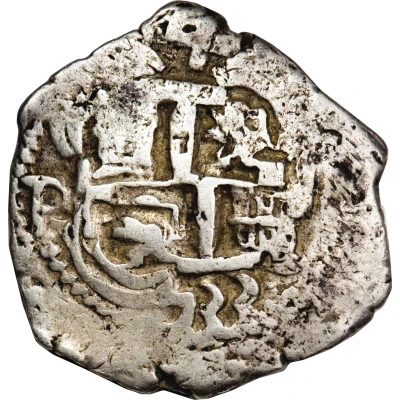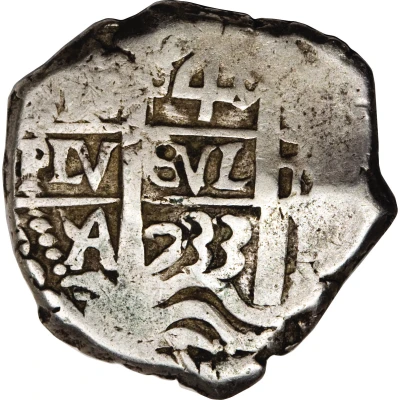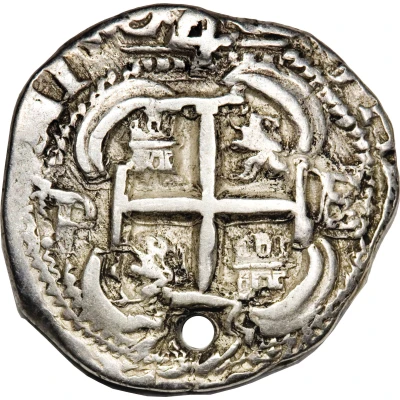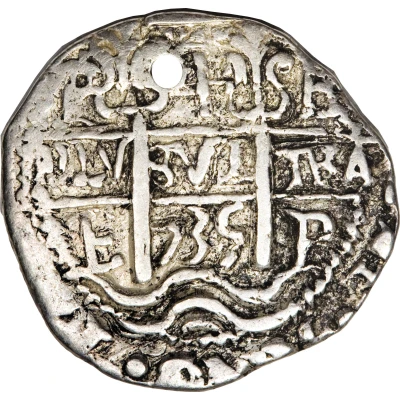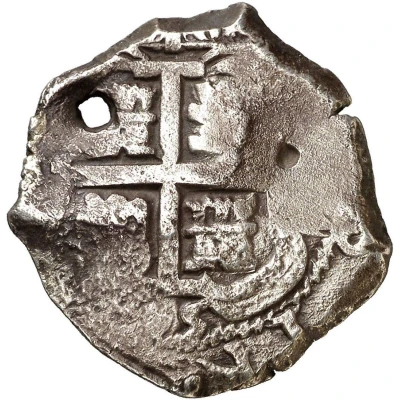
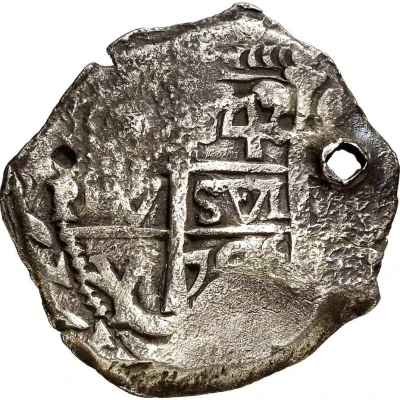

© Aureo & Calicó S.L., subastas numismáticas
4 Reales - Louis I
| Silver (.917) | 13.5337 g | 25 mm |
| Issuer | Bolivia |
|---|---|
| King | Louis I (1724) |
| Type | Standard circulation coin |
| Years | 1725-1727 |
| Value | 4 Reales |
| Currency | Real (1574-1825) |
| Composition | Silver (.917) |
| Weight | 13.5337 g |
| Diameter | 25 mm |
| Shape | Cob |
| Technique | Hammered (cob) |
| Orientation | Variable alignment ↺ |
| Demonetized | Yes |
| Updated | 2024-10-04 |
| Numista | N#351327 |
|---|---|
| Rarity index | 100% |
Reverse
Two columns over waves
Dos columnas sobre olas
Script: Latin
Lettering:
P 4 Y
PLV SVL TRA
Y 726 P
Unabridged legend:
Potosí 4 Reales Diego de Ybarbourou
PLVS VLTRA
Diego de Ybarbourou 1726 Potosí
Translation:
Potosi 4 Reales Diego de Ybarbourou
PLVS VLTRA (=Further Beyond)
Diego de Ybarbourou 1726 Potosi
Potosí 2 Reales
Plus Ultra (=Más allá)
Diego de Ybarbourou 1726
Engraver: Diego de Ybarbouru
Edge
Smooth, irregular.
Liso, irregular
Comment
NOTE: This coin was authorized by King Louis I, but he died very soon; his reign only lasted 6 1/2 months, due to his death by smallpox. His father, Phillip V who had resigned on Louis favor, resumed reign after Louis' death.Due to slow communications at the time, 1725 coins were minted showing Louis name, and also on the following years, to honor his memory.
NOTA: Esta moneda fue autorizada por el rey Luis I, pero falleció muy pronto; su reinado sólo duró seis meses y medio, debido a su muerte por viruela. Su padre, Felipe V, que había abdicado a favor de Luis, retomó el reinado, a la muerte de Luis.
Debido a las comunicaciones lentas de la época, la emisión de 1725 se realizó con el nombre de Luis, así como también los dos siguientes años, que se continuó con el mismo diseño para honrar su memoria.
Interesting fact
The 4 Reales coin from Bolivia, minted between 1725 and 1727 during the reign of Louis I, has an interesting feature. Despite being made of silver (.917), it was designed with a unique "tree trunk" shape, which sets it apart from other coins of its time. This distinctive shape was likely used to make the coin more easily identifiable and harder to counterfeit.
